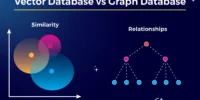In the ever-evolving landscape of computing, edge computing has emerged as a transformative paradigm, bringing computation and data storage closer to the source of data generation. This shift offers numerous advantages, from reduced latency to enhanced scalability. In this article, we’ll delve into the essentials of edge computing and provide quick tips for a successful implementation. ⚡
Understanding Edge Computing
Edge computing represents a distributed computing model that processes data near the edge of the network, closer to the data source, rather than relying on a centralized cloud-based system. This approach is driven by the need for real-time data processing, lower latency, and efficient bandwidth utilization. Edge computing is particularly beneficial in scenarios where immediate action based on data insights is crucial.
Quick Tips for Successful Edge Computing Implementation
1. Identify Appropriate Use Cases
Begin by identifying use cases that align with the strengths of edge computing. Applications requiring low latency, high bandwidth, or real-time processing are ideal candidates. Examples include Internet of Things (IoT) devices, autonomous vehicles, and augmented reality (AR) applications.
2. Optimize Data Processing at the Edge
Design your edge computing architecture to process data efficiently at the edge. This involves implementing lightweight algorithms and filtering mechanisms to reduce the volume of data that needs to be transmitted to centralized systems. Prioritize processing closer to the data source to minimize latency.
3. Ensure Robust Security Measures
Security is paramount in edge computing due to the distributed nature of data processing. Implement strong security measures, including encryption protocols, secure device authentication, and regular security audits. Consider using edge security solutions tailored to the specific requirements of decentralized architectures.
4. Select Appropriate Edge Devices and Infrastructure
Choose edge devices and infrastructure that suit your application requirements. These devices could range from edge servers and gateways to IoT devices. Ensure that selected devices can handle the computational load and have the necessary connectivity options for seamless integration into the edge ecosystem.
5. Implement Edge-to-Cloud Integration
Create a seamless integration strategy between edge devices and the cloud. While edge computing handles real-time or near-real-time processing, cloud platforms can be leveraged for additional analytics, storage, and long-term insights. Establish a robust communication framework for data flow between the edge and the cloud.
6. Prioritize Scalability and Flexibility
Design your edge computing solution with scalability and flexibility in mind. As the number of connected devices grows, your infrastructure should be able to scale horizontally to accommodate increased workloads. A flexible architecture allows for easy adaptation to evolving application requirements.
7. Embrace Edge Analytics for Insights
Leverage edge analytics to gain actionable insights at the edge itself. By analyzing data locally, you can extract valuable information without relying heavily on centralized processing. This approach enhances efficiency and responsiveness, particularly in time-sensitive applications.
8. Implement Edge-Friendly Development Practices
Encourage development practices that are conducive to edge computing. This includes optimizing code for resource-constrained environments, minimizing dependencies, and adopting containerization for efficient deployment. Edge-friendly development practices contribute to smoother implementation and operation.
Conclusion: Navigating the Edge
As edge computing continues to redefine the landscape of computing, its successful implementation requires a strategic approach and adherence to best practices. By understanding the essentials and applying these quick tips, you can navigate the complexities of edge computing and unlock its full potential. Embrace the era of decentralized computation, reduced latency, and enhanced agility. Happy edge computing!








